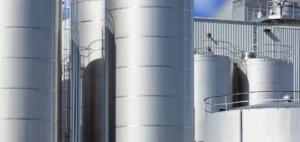Stockholm Exergi has initiated construction of a significant Carbon Capture and Storage (CCS) facility at the Värtaverket district in Stockholm. The project aims to capture around 800,000 tonnes of CO₂ annually, exceeding the total annual emissions generated by road traffic in Sweden’s capital. This new capture unit will employ technology involving the separation and liquefaction of CO₂ resulting from biofuel combustion, primarily derived from forestry industry residues. The installation is expected to be operational by 2028.
Financial Structure and Industrial Partnerships
The total project cost exceeds one billion euros, partly financed through institutional loans and public funding. The European Investment Bank (EIB) has provided Stockholm Exergi with a €260 million loan to finance the construction of the capture facility. Additionally, an Engineering, Procurement, and Construction (EPC) contract valued at approximately €600 million has been awarded to the Italian company Saipem. Funding is also supported by the European Union’s Innovation Fund, the Swedish Energy Agency, and revenue from selling negative emission certificates to private companies.
Strategic Expansion of the Northern Lights Project
Captured CO₂ will be temporarily stored in Stockholm before being shipped to the Northern Lights facility located in Øygarden near Bergen, Norway. Northern Lights, a project jointly operated by energy companies Equinor, Shell, and TotalEnergies, is undergoing a significant expansion of its storage capacities. This expansion, amounting to 7.5 billion Norwegian crowns (around $714 million), will increase the project’s annual capacity to 5 million tonnes by 2028, from the current 1.5 million tonnes. This second phase also benefits from financial support of €131 million provided by the European Connecting Europe Facility (CEF).
Contracts and International Logistics
A 15-year commercial agreement has been established between Stockholm Exergi and Northern Lights for the annual transport and storage of 900,000 tonnes of CO₂. From 2028 onwards, CO₂ captured in Stockholm will be transported by sea to underground storage facilities in Norway, located approximately 110 kilometers offshore, at depths exceeding 2,600 meters beneath the seabed. The logistics infrastructure planned includes new onshore storage tanks, a jetty specifically designed to receive transport ships, and a subsea injection network for liquefied CO₂.
Operational Rollout and Storage Capacities
The first phase of Northern Lights, already operational and predominantly funded by the Norwegian government through the Longship initiative, will become fully operational by summer 2025. It will initially offer an annual storage capacity of 1.5 million tonnes, targeted primarily at the cement industry and district heating providers. The second phase, scheduled for 2028, will leverage this existing infrastructure to substantially increase captured and stored volumes, thereby integrating Stockholm’s new unit into an expanded international logistical chain.
This development marks a major step in the cross-border integration of CCS infrastructures in Europe, paving the way for strengthened industrial cooperation and new market opportunities.






















